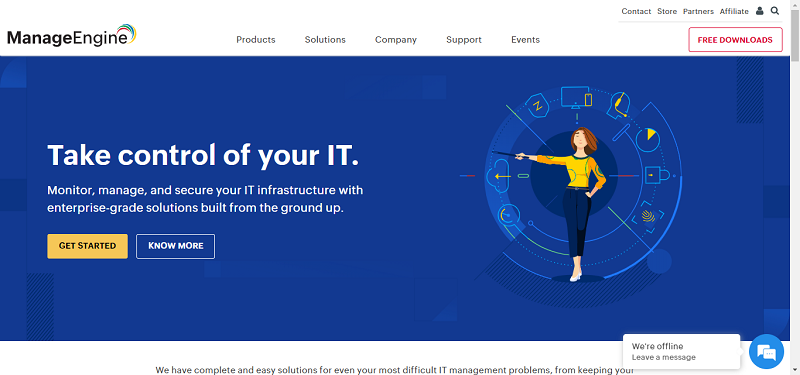Supply chain and manufacturing environments are evolving rapidly in the face of industry 4.0 advancements and the continuation of the COVID-19 pandemic.
Organizations across industries are trying to navigate this challenging landscape and implement technologies, processes, and operations that help them connect all the different components that make up their business.
Ronald van Loon is a SAP partner and had the opportunity to discuss the state of supply chain and manufacturing industry 4.0 in the SAP webinar “Digital Supply Chain: Industry 4.0.” Ronald also sat down with Tom Raftery, Global VP, Futurist, and Innovation Evangelist at SAP, and was interviewed in a podcast about the latest challenges, developments, and trends in supply chain industry 4.0.
Building the right digital and data-driven foundation is crucial for industry 4.0 developments. Analytics, artificial intelligence (AI) applications, IoT landscapes, edge, cloud, and 5G are all critical components that organizations must consider when recreating supply chains and operations that are fit for the aftermath of the pandemic and the coming future.
Businesses have to implement the right technologies that align with their business strategies to be resilient and flexible enough to prepare for any current and future disruptions that they face.
Supply chains are more complex and volatile than ever were before, and it’s become much more difficult to manage risk. The pandemic has disrupted everything from economics and how people work, to material shortages and new pressures on infrastructure and security.
Organizations that started implementing industry 4.0 solutions before the pandemic had a much easier time dealing with these challenges than organizations that had to quickly adapt after the pandemic. Supply chains have to strike a balance between delivering the right services while managing costs and being as efficient as possible.
But supply chains currently have many challenges. For example, people having to work remotely, and legacy IT and OT infrastructures limit supply chain capabilities. Also, supply and demand fluctuations are causing cash flow constraints and businesses have to cut or reevaluate their investments. On top of it all, there is a lack of skills, knowledge, and understanding of the technology, processes, and operational strategies to move to an industry 4.0 environment.
For example, aerospace had to deal with demand suppression. Energy companies’ demand prices decreased at first, but now they are skyrocketing in places like Europe. Healthcare had to manage material volatility.
This is a lot for organizations to have to deal with. Not to mention the individual challenges that are unique to each industry. That’s why organizations need supply chain industry 4.0 solutions – because they need the right technology to digitize their supply chains, bring visibility into all their systems, people, processes, and operations, and deliver new products and services.
Everything in the supply chain is becoming digital to meet modern customer demands and expectations and fluctuating supply chain conditions. Global predictive planning is crucial for supply chain management in this digital age, and businesses need a connected technology foundation to bring transparency across supply chain processes and operations.
Cloud
Organizations are using the cloud as a way to deliver their technology platform. The cloud is the driver for creating a flexible technology platform that helps an organization manage infrastructure wherever required, whether in the cloud, on-premise, the edge, or a hybrid model.
The cloud is not a destination. But instead, it’s a journey to create a technology platform that can help businesses overcome the infrastructure challenges that they face when trying to scale, whether that’s with constraints resulting from storage or compute capacity, for example.
Businesses can start by building an IT strategy that connects with their business strategy. C-level should define this and they should work in collaboration with teams to determine use cases such as inventory optimization in the retail sector, automated forecasting in the oil and gas industry, or delivering personalized services in the financial sector.
AI and Analytics
Implementing AI-enabled supply-chain management improves logistics costs by 15%, inventory levels by 35%, and service levels by 65%.
End-to-end supply chain visibility and planning are delivering substantial benefits to organizations. Predictive planning is helping businesses manage and optimize supply chain resilience and continuity, resulting in improvements to demand planning and real-time inventory management.
When you acquire enough data to be used for predictive planning, you can start implementing AI applications to enhance data quality or processes and execute plans automatically.
IoT
When you can measure data from IoT, you can start making changes to business models and operations.
As Ronald states in the podcast, “the impact is not only connecting every device, connecting every element (in the supply chain), and connecting every machine. It’s having a bottom-line impact on how you do business.”
Take production and logistics, for example. You can connect to products and track their quality, such as performing temperature checks in the foods and beverages industry and discovering anomalies in machinery that help indicate areas for predictive maintenance. If you can measure data from sensors, you can generate insights, adapt new service models, and even compete in different industries.
5G
5G technology provides lightning-fast connections and enhanced data transfer capabilities. Organizations need insights in real-time, like autonomous vehicles that need to transfer data instantly. Minor delays in data transfer can have disastrous consequences for autonomous vehicles, which is why consistent, fast, and uninterrupted connections are vital.
When organizations combine IoT and 5G, organizations can automate processes across warehouses or factories. Such as in augmented reality (AR), virtual reality (VR), or mixed reality (MR) use cases using cameras and geopositioning to remotely guide and direct workers on factory floors, helping them to perform maintenance or make adjustments to equipment and machines accurately.
Supply chain and manufacturing environments need to be digital and data-driven so that businesses can implement AI and analytics capabilities that help predict and automate actions across the supply chain. A modern technology platform connects sales, distribution, production, planning, and procurement on a single platform so that organizations have the insights they need from different departments to adapt to disruption and prepare for the future.
With supply chain industry 4.0 solutions, organizations can better manage risk, overcome legacy IT and OT infrastructures holding them back, and meet modern cybersecurity demands.
For more information about supply chain 4.0, be sure to check out the SAP webinar and podcast with Ronald van Loon.
By Ronald van Loon





